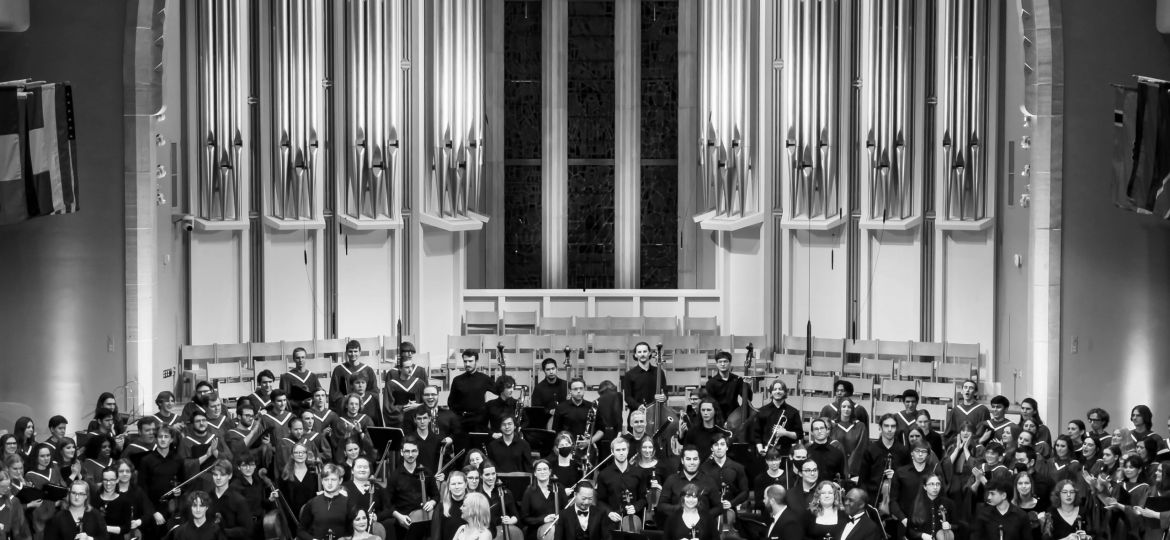
On April 23, the Chapel Choir and St. Olaf Orchestra performed a collaborative Oratorio for the first time since the beginning of the COVID-19 pandemic. The performance began with a set of pieces by the Chapel Choir, then a performance of Wolfgang Amadeus Mozart’s “Requiem” accompanied by the St. Olaf Orchestra and four professional soloists.
The Chapel Choir Spring Concert and Oratorio began with a poetry reading dedication by the choir’s president Ruhama Solomon ’24. Solomon dedicated the performance to the ensemble’s conductor Tesfa Wondemagegnehu who took a leave of absence at the beginning of the semester. Despite the circumstances, the student leaders of the choir showed their commitment to the ensemble. Manager Sophia Singleton ’23 also performed a poem during the program’s first half celebrating resilience.
Chapel Choir began with Eric Whitacre’s “Sleep,” one of the most popular choral songs of the last few decades. “Sleep” set the tone of the concert, which focused on rejuvenation and rebirth. Next was the premiere of “The Thing Is” by Elijah Culp ’24. Culp’s composition was perhaps the concert’s highlight, with Culp conducting the choir and an accompanying string quartet. Finally, the first half of the night concluded with a performance of “Dancing in The Graveyard” that featured a student soloist and vocal quintet.
A ten-minute intermission followed the first half so the orchestra could set up for the Mozart “Requiem.” The packed pews quieted then erupted into applause as St. Olaf Orchestra conductor Dr. Chung Park and the four professional soloists entered the stage. From the first note, the orchestra played with energy and precision equal to the choir, perfectly fitting for the complex yet balanced work.
Chapel Choir had incredible stamina through the “Requiem,” maintaining high excitement in their sound through the long work. Notably, many movements’ long runs or melismas sounded energized and well-pitched.They melismas and phrases had a beautiful shape, keeping the audience breathless and on the edge of their seat. Three of the four soloists were St. Olaf voice faculty, connecting the soloists and ensemble performance more. The soloists, orchestra, and choir played off each other well to create a balanced, full sound.
“Lacrimosa,” the most famous movement of Mozart’s “Requiem,” especially showed the artistry and preparation of the choir and orchestra. It felt fresh despite being one of the most recognizable pieces of classical music under the conducting of Dr. Park. Overall, the concert showcased creativity while performing new and classic pieces. The program conveyed the message of revitalization and rebirth.

